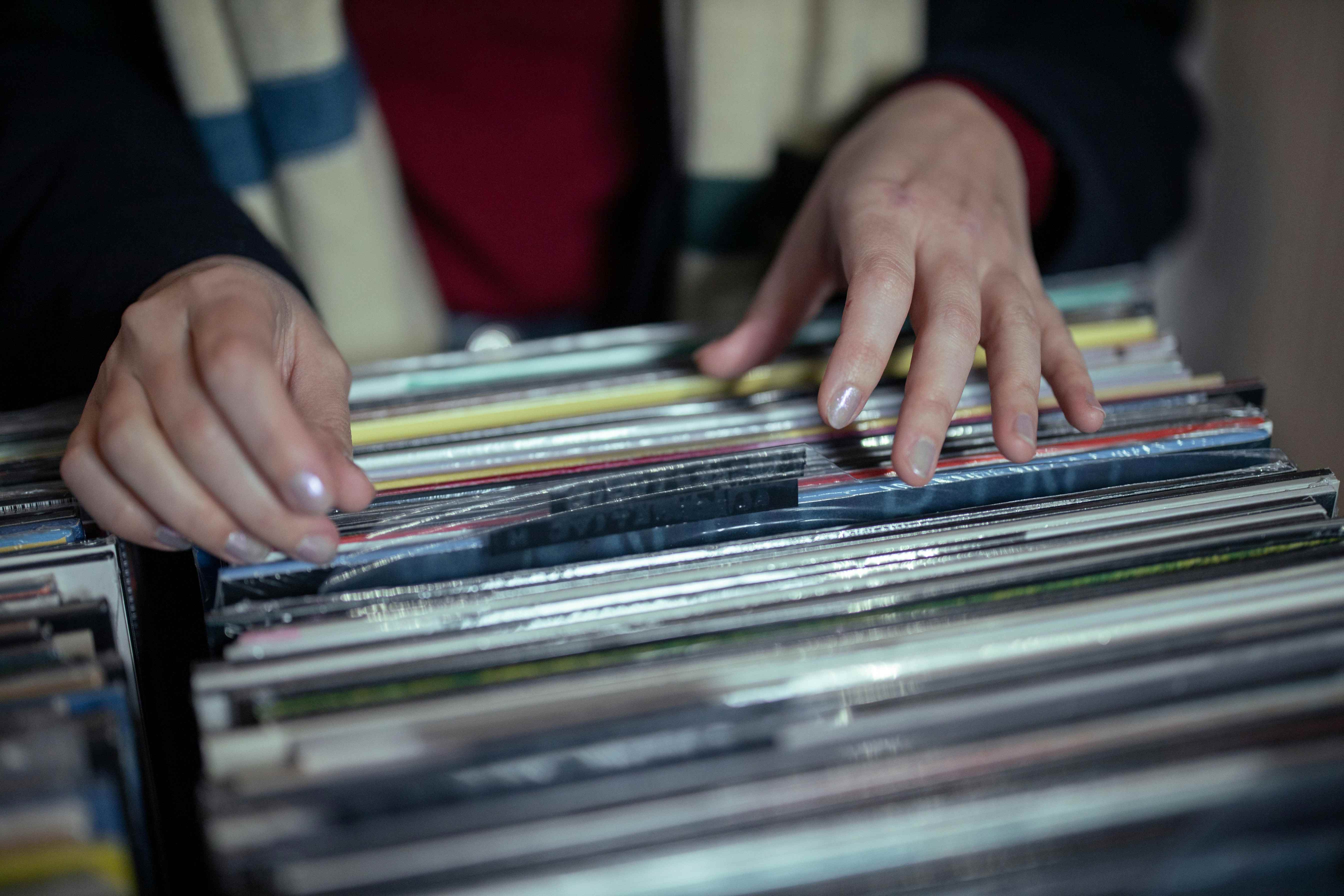So, you've embraced the vinyl revival, or perhaps you're a long-time devotee. You've got your turntable, a growing collection of records, and you're enjoying the warmth and ritual. But that nagging audiophile itch persists: can it sound even better? The answer, almost invariably, is a resounding yes. Improving the sound quality of your record player isn't a dark art; it's a science, a craft, and a deeply rewarding pursuit. It’s about understanding that your turntable is not just a single component, but the start of an intricate system where every detail matters. This holistic view, this dedication to extracting every nuance from the groove, is a passion we share at XJ-HOME, where we believe the journey to audio excellence is as important as the destination.
Let's move beyond the obvious "buy a more expensive turntable" advice. We're delving into the practical, often surprisingly affordable, steps you can take to elevate your listening experience from merely good to genuinely captivating.
1. The Source of Truth: Cartridge & Stylus Mastery
This is ground zero. The stylus tracing the record groove is where the mechanical information is first translated into an electrical signal. No amount of downstream excellence can fix problems originating here.
-
Stylus Health & Hygiene:
-
Cleanliness is Next to Godliness (in Audio): A dirty stylus—caked with dust, grime, and vinyl residue—will sound muffled, distorted, and can even act like sandpaper on your precious records. Clean it religiously with a dedicated stylus brush (always brushing from back to front, never side-to-side or front-to-back). For more stubborn build-up, a specialized stylus cleaning fluid (used sparingly and according to instructions) is a wise investment.
-
Know When to Say Goodbye: Styli are consumables. They wear out. A worn stylus doesn't just sound bad (loss of high frequencies, increased distortion, mistracking); it actively damages your records by re-shaping the grooves. Typical lifespans range from 400 to 1000 hours, depending on the stylus profile, tracking force, and record cleanliness. If you bought a used turntable or cartridge, or if you've clocked serious hours, a new stylus (or entire cartridge) should be high on your list.
-
-
The Stylus Profile Advantage – Beyond the Basic Cone:
-
Not all styli are created equal. The shape of the diamond tip dramatically affects how it contacts the groove walls.
-
Conical (Spherical): Robust and forgiving, but makes less contact with groove walls, potentially missing finer details and wearing records slightly faster due to higher pressure points.
-
Elliptical: A common and worthy upgrade. Its dual radii contact more of the groove wall, offering better high-frequency response, lower distortion, and improved tracking compared to conical.
-
Advanced Profiles (Line Contact, MicroLine, Shibata, Hyperelliptical): These more sophisticated shapes mimic the cutting stylus used to make record masters. They offer maximum groove wall contact, leading to exceptional detail retrieval, extended frequency response, lower distortion, and often longer stylus/record life due to distributing the tracking force over a larger area. The difference can be revelatory. Exploring these options is a key step in serious sound improvement. Many manufacturers, like Audio-Technica, offer excellent guides on their stylus technologies, which can be found with a search for "Audio-Technica stylus shapes guide."
-
-
-
Cartridge Alignment: The Geometric Imperative:
-
If your tonearm has a standard headshell mount (not a P-mount/T4P), precise cartridge alignment is non-negotiable for optimal sound. This ensures the stylus maintains the correct tangential angle to the groove as it travels across the record, minimizing tracing distortion. You'll need an alignment protractor (printable online versions work, but a mirrored or acrylic one is easier to use). Key parameters include:
-
Overhang: The stylus tip extending a specific distance beyond the turntable spindle.
-
Zenith: Viewed from the front, the stylus itself should be perpendicular to the record surface.
-
Azimuth: Viewed from the front, the cartridge body (and thus the cantilever) should be parallel to the record surface, ensuring the stylus sits squarely in the groove for proper channel balance.
-
-
Patience here pays huge dividends in clarity, imaging, and reduced wear.
-
-
Vertical Tracking Force (VTF) – The Sweet Spot:
-
This is the downward pressure the stylus exerts. Too light, and it will mistrack, causing sibilance, distortion, and groove damage. Too heavy, and the sound becomes leaden, dynamics are crushed, and you accelerate wear.
-
Always use the cartridge manufacturer's recommended VTF range. A good quality digital stylus force gauge is an inexpensive and indispensable tool for accurate VTF setting. Don't rely on tonearm calibration markings alone.
-
-
Anti-Skate (Bias Compensation) – The Equalizer:
-
A natural skating force pulls the tonearm towards the center of the record. Anti-skate applies a compensatory outward force. Correct anti-skate ensures even pressure on both groove walls, leading to balanced sound and reduced distortion. Most tonearms have an anti-skate dial, often set to match the VTF. Fine-tuning with a test record can be beneficial.
-
-
Vertical Tracking Angle (VTA) / Stylus Rake Angle (SRA):
-
VTA refers to the tonearm's angle relative to the record surface, which in turn determines the Stylus Rake Angle (the angle of the stylus itself in the groove). Ideally, the tonearm should be parallel to the record when playing. However, slight adjustments (raising or lowering the tonearm pillar, if your turntable allows) can optimize SRA for specific cartridges or even records of varying thickness. Correct SRA can significantly impact high-frequency clarity, soundstage depth, and overall focus. This is a more advanced tweak but can be the icing on the cake.
-
2. The Foundation: Stability, Isolation, and Vibration Control
Your turntable is a vibration-detecting machine. Unfortunately, it's indiscriminate – it will pick up the musical vibrations from the groove and any unwanted external or internal vibrations, which manifest as muddy sound, feedback, or tracking issues.
-
A Level Playing Field is Essential: Your turntable must be perfectly level. Use a small spirit level on the platter (not just the plinth). An unlevel deck can cause uneven stylus wear, tracking problems, and affect speed stability.
-
Isolate, Isolate, Isolate!
-
Location, Location, Location: Place your turntable on a rigid, stable, and heavy surface. A dedicated audio rack is ideal. Avoid flimsy furniture or placing it on the same surface as your speakers (this is a recipe for feedback).
-
Fighting Footfalls and Speaker Rumble: Isolation feet (sorbothane, rubber, spring-based) or an isolation platform (from simple DIY solutions like a granite slab on squash balls to sophisticated commercial platforms) can dramatically reduce the transmission of external vibrations. The improvement in bass clarity and overall definition can be astonishing.
-
-
Platter Mats – More Than Just a Pretty Face:
-
The mat between your record and the platter serves to support the record, dampen platter resonances, and sometimes provide a degree of static control. Common materials include felt (can be static-prone), rubber (good damping), cork (often a good all-rounder), leather, and various acrylic or composite materials. Experimenting with different mats is a relatively inexpensive way to subtly tune the sound.
-
3. Record Hygiene: Pristine Vinyl for Pristine Sound
You can't extract clean sound from a dirty record. It's that simple.
-
Pre-Flight Check: Before every play, use a good quality carbon fiber anti-static record brush to remove loose surface dust.
-
The Deep Clean: For records that are genuinely soiled (fingerprints, embedded grime, mold release compound on new records), a wet cleaning process is necessary.
-
Manual Methods: Record cleaning solutions and microfiber cloths can work, but require care.
-
Record Cleaning Machines: Devices like the Spin-Clean (manual bath type) or vacuum-based record cleaning machines (RCMs) offer a far more effective and consistent clean. An RCM is a serious investment but arguably one ofthe most significant upgrades for any serious vinyl collector. The reduction in surface noise and increase in clarity from a properly cleaned record is often breathtaking.
-
4. The Amplification Path: Phono Preamp and Beyond
The journey from stylus to speaker is critical.
-
The Unsung Hero: The Phono Preamplifier (Phono Stage):
-
The electrical signal from your cartridge is incredibly faint (millivolts for Moving Magnet, even less for Moving Coil). It needs two things:
-
Gain: Significant amplification to bring it up to line level (what your main amplifier expects).
-
RIAA Equalization: Records are cut with reduced bass and boosted treble (the RIAA curve) to save groove space and reduce noise. The phono preamp reverses this curve, restoring flat frequency response.
-
-
Many integrated amps and receivers have built-in phono stages, but their quality can be a major bottleneck, especially in budget to mid-tier gear. A dedicated outboard phono preamp can offer lower noise, better RIAA accuracy, and often options for adjusting gain and loading (impedance/capacitance) to perfectly match your cartridge. This can be a game-changing upgrade. Reputable sites like What Hi-Fi? often have excellent reviews and explanations of phono preamplifier technology and its importance.
-
-
Cables – Sense, Not Snake Oil:
-
Use good quality, well-shielded interconnect cables between your turntable and phono preamp, and from the preamp to your main amplifier. Keep cable runs as short as practical to minimize noise and capacitance issues, especially the critical turntable-to-phono preamp link. You don't need to spend a fortune, but avoid the cheapest, flimsiest options.
-
5. The Listening Space & Speaker Synergy
Your room is the final component in your audio system.
-
Speaker Placement Fundamentals: How and where your speakers are placed has an enormous impact on the sound. Experiment with distance from walls (especially rear and side), toe-in (angling them towards your listening position), and the distance between the speakers. The goal is to achieve a balanced frequency response and a coherent soundstage.
-
Basic Room Acoustics: Hard, reflective surfaces (bare walls, glass) can cause harshness and muddled imaging. Soft furnishings, rugs, curtains, and even strategically placed bookshelves can help absorb and diffuse sound, leading to a more controlled and enjoyable listening experience.
The Ongoing Pursuit of Perfection
Improving your record player's sound quality is an iterative process, a journey of discovery. Each adjustment, each upgrade, brings you closer to the music. It’s this dedication to refinement, this hands-on engagement with the art and science of sound reproduction, that defines the true audiophile spirit. At XJ-HOME (https://xenonjade.com), we champion this pursuit, believing that the effort invested in optimizing your system is repaid a thousandfold in listening pleasure.
Start with the fundamentals – stylus care, proper alignment, and good isolation. These steps often yield the most significant improvements for the least outlay. From there, explore, experiment, and most importantly, trust your ears. Happy listening!





Leave a comment
All comments are moderated before being published.
This site is protected by hCaptcha and the hCaptcha Privacy Policy and Terms of Service apply.